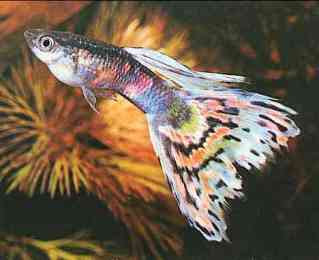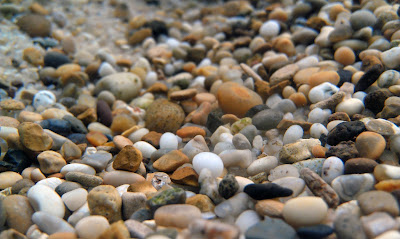Breeding Guppies for dummies

Guppies rarely need any encouragement to breed in the aquarium, but if you want to produce high-quality guppies it is a good idea to devote some time and energy to the process of breeding guppies. By carefully controlling the breeding process instead of simply allowing your fish to breed randomly, you can develop guppies with a much higher quality than what you would normally find in pet shops.
Start out with high quality fish
While the Guppy in your local fish store might be an excellent pet, chances of finding high quality guppies in ordinary pet shops are usually very slim. It is therefore advisable to contact a breeder and purchase high quality fish of the specific color and/or fin strain that you wish to breed. Purchasing from a reputable breeder is usually more expensive, but you will get a much better genetic material to work with.
The breeding aquarium
If you want to breed guppies, you should give them at least a five gallon aquarium. A five gallon aquarium will be enough for one male and two females. If you want to be able to keep two males and up to ten females, you need to provide them with a ten gallon aquarium. A ten gallon aquarium is recommended if you are serious about breeding guppies, since this will increase your chances of finding all the traits you are interested in. Keeping only one male and two females will naturally limit the selection of available characteristics significantly.
5 gallons of water is roughly equivalent to 20 liters.
10 gallons of water is roughly equivalent to 40 liters.
Decorate the breeding aquarium with floating plants since this will provide shelter for the fry until you have a chance to remove the adults. You can also add weighted spawning mops to provide even more hiding spots. If you keep the adults in the aquarium, they will most likely eat all the fry.
The water
The aquarium should be cycled and you should make sure that the water quality is kept at an ideal level at all times.
Guppies live in fresh and brackish environments in the wild and adding some aquarium salt to the breeding aquarium is a good idea. One tablespoon (15 ml) of salt is enough for 10 gallons (40 L) of water.
The food
To get your adult guppies into excellent breeding condition you can feed them plenty of meaty food. Brine shrimp, black worms, and bloodworms are all good choices and combining them are even better since it will make the diet more varied. The meaty food should be combined with one or several high quality flake foods suitable for guppies. Algae flakes are a good addition to the guppy flakes, and liver flakes can also be beneficial. Keep the diet varied to ensure optimal growth rate and good health.
Selective breeding vs. line breeding
Two terms that you will come across as you read more about fish breeding are selective breeding and line breeding. Selective breeding is when you select fish with desirable characteristics and use them for breeding. Over many generations, selective breeding will lead to strains where the desirable traits are exceptionally common. Line breeding is when two related guppies are mated together to promote certain traits. (Line breeding can therefore in a way be said to be a specific form of selective breeding.) When it comes to Guppies, it is common to mate a female offspring with desirable traits back to the original breeding group by mating her with her father. It is also possible to mate Guppy sons with mothers, but the result is usually not as good as when you mate Guppy daughters with fathers. Breeders who still wish to mate Guppy sons and mothers need to keep very stringent records to avoid future problems. Line breeding will greatly increase the chance of seeing the desirable traits in the offspring and is therefore very common among Guppy breeders.
One of the most important aspects of Guppy breeding is culling, culling and culling. Only keep the very best Guppies and use them for breeding. Not only should you remove any deformed fish; you should remove all the less colorful fishes as well and fishes with non-desirable traits. You can gently put the undesirable fish to sleep by placing them in a bag filled with aquarium water and place the bag in the freezer. This will cause the Guppy to go into state of hibernation and then die in its sleep. You can also use excess fish as feeder fish, but keep in mind that a strict diet of Guppies only is unhealthy for many predatory fish species.


Comments
Post a Comment